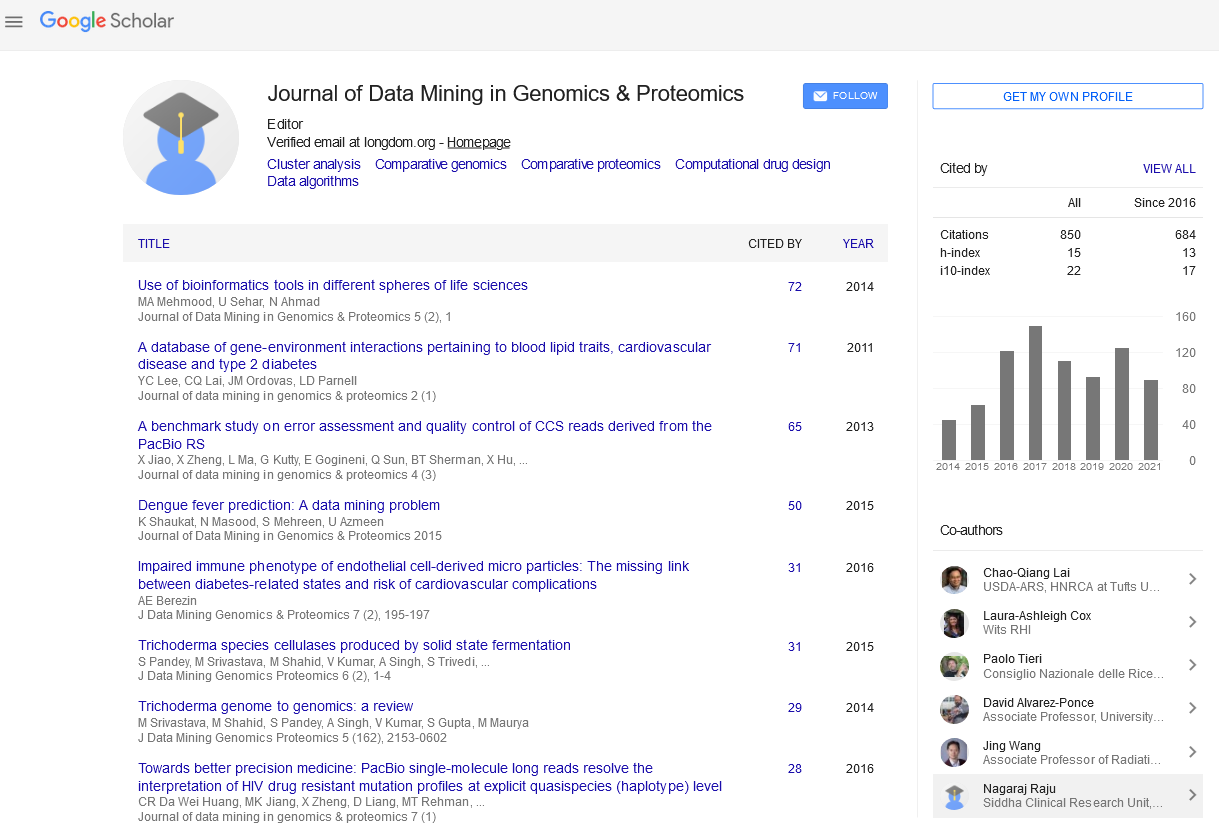PMC/PubMed Indexed Articles
Indexed In
- Academic Journals Database
- Open J Gate
- Genamics JournalSeek
- JournalTOCs
- ResearchBible
- Ulrich's Periodicals Directory
- Electronic Journals Library
- RefSeek
- Hamdard University
- EBSCO A-Z
- OCLC- WorldCat
- Scholarsteer
- SWB online catalog
- Virtual Library of Biology (vifabio)
- Publons
- MIAR
- Geneva Foundation for Medical Education and Research
- Euro Pub
- Google Scholar
Useful Links
Share This Page
Journal Flyer

Open Access Journals
- Agri and Aquaculture
- Biochemistry
- Bioinformatics & Systems Biology
- Business & Management
- Chemistry
- Clinical Sciences
- Engineering
- Food & Nutrition
- General Science
- Genetics & Molecular Biology
- Immunology & Microbiology
- Medical Sciences
- Neuroscience & Psychology
- Nursing & Health Care
- Pharmaceutical Sciences
Abstract
Interacting Proteins and Pathways in Human Alzheimer’s Disease Brain Tissue Using Mass Spectrometry
Malathi Narayan, Lisa Kirouac, Dale Chaput, Stanley Stevens, Jaya Padmanabhan and Umesh K Jinwal
Alzheimer’s disease (AD) is the most common form of dementia and the 6th leading cause of death in the United States. The major pathological hallmarks observed in AD include the formation of intracellular neurofibrillary tangles comprised of phosphorylated forms of the microtubule associated protein tau, and the deposition of extracellular plaques composed of amyloid beta. Cdc37 is a co-chaperone of Hsp90, which recruits client kinases to the Hsp90 complex for folding and stabilization. It has been previously shown that Cdc37 can not only bind and preserve tau, but also stabilize kinases that can phosphorylate tau. The goal of the current study was to identify novel Cdc37- interacting proteins in human AD tissue compared to normal tissue using an immunoprecipitation-based approach combined with mass spectrometry. We identified 39 unique proteins that interacted with Cdc37 in AD samples only and 7 proteins that interacted with Cdc37 in normal samples only. 39 proteins were found to bind Cdc37 in both AD and normal tissue. Of these, 18 showed increased interaction in AD tissue, 10 showed increased interaction in normal tissue and 11 showed equal nteraction in both samples. Ingenuity Pathway Analysis of the data indicates that these Cdc37-interacting proteins could signal through the p70S6K, PI3K / Akt, TGFß, ErbB, NF- kB, calmodulin, p38 MAPK and JNK pathways. Identification of these novel proteins and pathways linked to Cdc37 may indicate its role both as a non-kinase co-chaperone and in other pathways in the AD brain.


